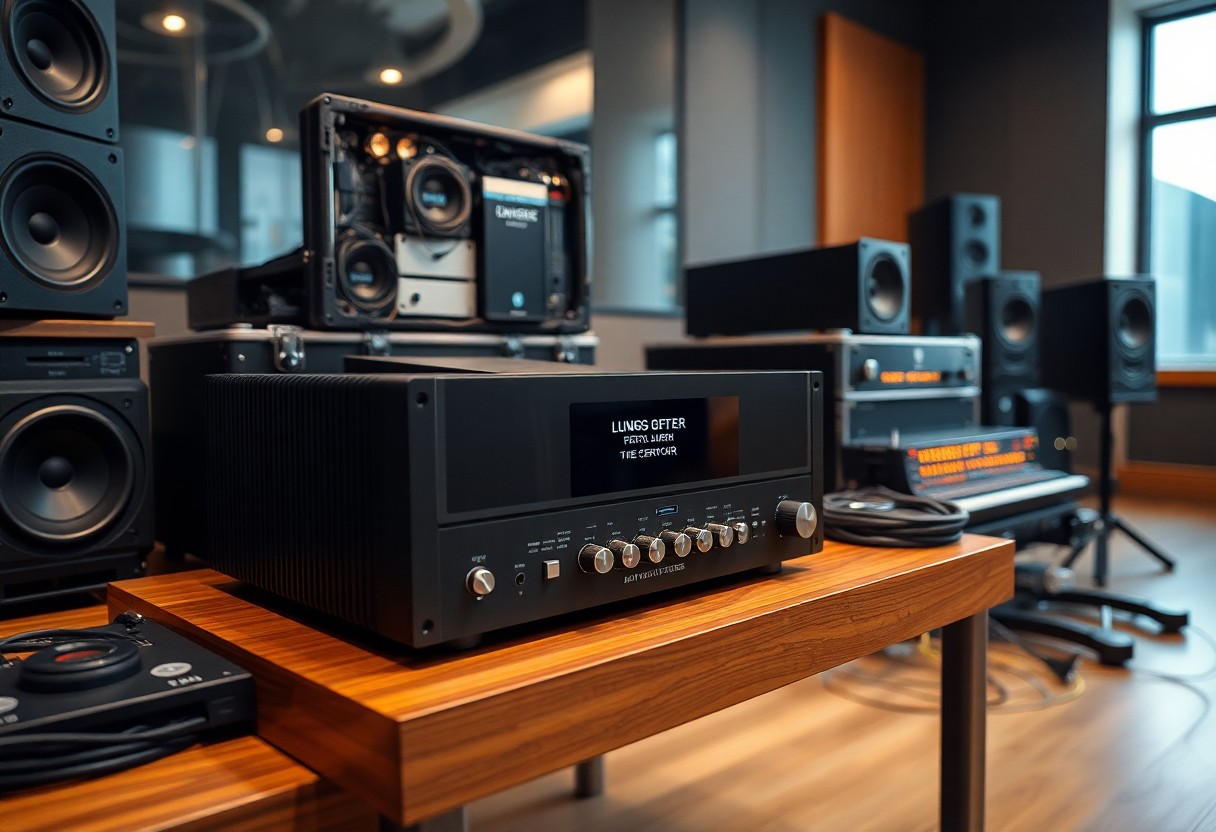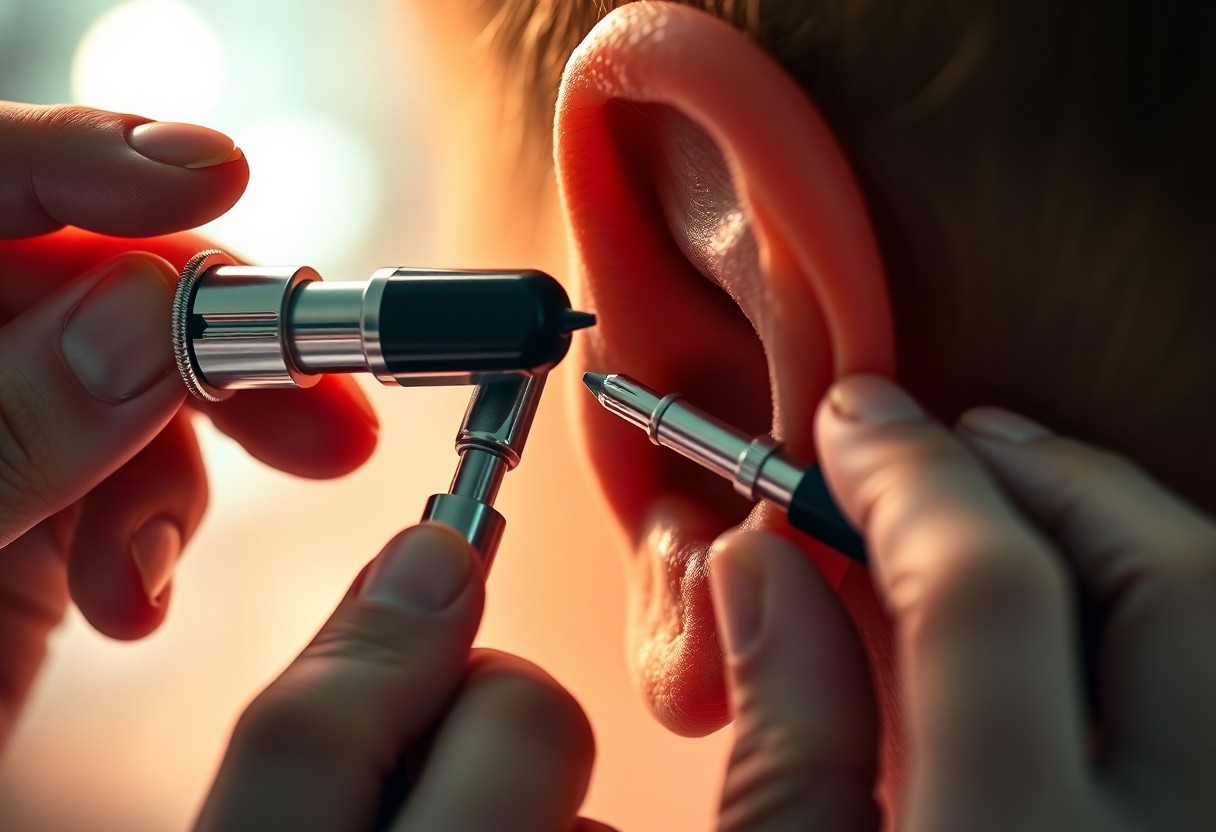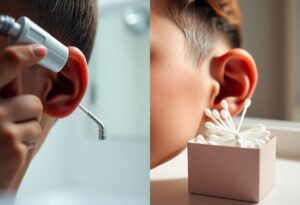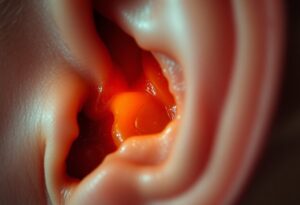With the increasing reliance on hearing aids and audio devices, understanding the impact of ear wax on sound quality becomes vital for you. Professional ear wax extraction may not only improve your comfort but also enhance the amplification fidelity of your listening experiences. This post explores how maintaining clean ears can lead to clearer sound performance, ultimately enriching your auditory engagement with everyday environments.
Key Takeaways:
- Professional ear wax extraction can improve sound quality by preventing blockage in hearing devices.
- Improved amplification fidelity can enhance user experience with hearing aids and auditory devices.
- Regular maintenance, including ear wax removal, is imperative for optimal device performance.
Debunking Myths: The Misunderstood Nature of Ear Wax
Common Misconceptions about Ear Wax
You might think ear wax is dirty or harmful, but many misconceptions exist about its nature. For example, some believe that all ear wax is excessive or should be removed regularly. In reality, cerumen varies in amount and type among individuals, and its presence doesn’t always indicate a problem. Understanding these myths helps you better appreciate its actual role instead of fearing it.
The Biological Role of Cerumen
Cerumen, or ear wax, plays a vital role in ear health. It protects your ears by trapping dust, debris, and microorganisms, preventing infections and irritation. Additionally, cerumen has antibacterial properties, which help maintain a balanced environment in the ear canal. The consistency of ear wax can also assist in lubrication, reducing the risk of excessive dryness or irritation.
This natural substance contains secretions from sebaceous and ceruminous glands, creating a protective barrier. Studies show that individuals with normal levels of cerumen often report fewer ear-related issues. The balance of cerumen is necessary, as too little can lead to dryness and irritation, while excessive production can cause blockages. Understanding this balance contributes to better ear health and overall auditory clarity.
The Science of Sound: How Ear Wax Affects Hearing
Acoustic Impact of Blocked Ear Canals
Blocked ear canals significantly alter the acoustic properties of sound that reaches your eardrum. Excess ear wax can dampen sounds, leading to muffled hearing or distortion. This results from the wax acting as a barrier, reducing the clarity and strength of sound waves. Studies show that even a small amount of obstruction can create a noticeable decrease in hearing sensitivity, impacting your ability to comprehend speech and enjoy music fully.
The Relationship Between Ear Health and Sound Quality
Your ear health directly influences the fidelity of sound you perceive. Conditions such as excessive ear wax buildup can impede the transmission of sound waves, resulting in a less nuanced listening experience. The clearer the ear canal, the more easily sound waves can reach your auditory system, allowing you to appreciate the subtle tones and frequencies in music or conversation. Regular ear maintenance plays a key role in preserving optimal auditory function.
Effective ear health management hinges on understanding the connection between your ear’s physiology and sound perception. For instance, the presence of moisture, infections, or inflammation can compromise your auditory clarity and fidelity. In a study, individuals with regular ear canal hygiene reported enhanced sound resolution compared to those with untreated ear wax buildup. Additionally, maintaining clean ear canals can prevent longer-term impacts on hearing acuity, demonstrating that proactive care can significantly enhance your overall listening quality.
Professional Ear Wax Extraction: Techniques and Technologies
Traditional Methods vs. Modern Approaches
Traditional ear wax removal methods such as manual removal with cotton swabs or ear candles can inadvertently push wax deeper or cause injury. Modern approaches, including micro-suction and endoscopic techniques, offer more precision and safety. These advanced methods significantly reduce the risk of complications and provide instant relief from blockage, enhancing your overall auditory experience.
Tools of the Trade: A Look into Professional Equipment
Professional ear wax extraction employs various sophisticated tools that enhance the effectiveness and safety of the procedure. Micro-suction devices, specialized curettes, and illuminated otoscopes represent the cutting edge of this field. Each tool is designed to address specific challenges, ensuring that practitioners can adapt to the unique conditions of your ear canal.
The use of micro-suction devices allows for the gentle removal of wax without the risk of damage to the eardrum. This technology creates a suction effect that draws out debris efficiently. Curettes come in multiple shapes and sizes to accommodate different ear anatomies, while illuminated otoscopes help practitioners visualize the ear canal clearly. This comprehensive approach ensures thorough cleaning with minimal discomfort, resulting in a more enjoyable hearing experience for you.

The Amplification Connection: Can Cleaning Enhance Audio Devices?
The Effects of Ear Wax on Hearing Aids
Ear wax can dramatically affect the performance of hearing aids, as it blocks the microphone and speaker openings. This blockage can lead to distorted sound quality, reduced amplification, and increased feedback. Regular cleaning and professional maintenance are necessary to ensure optimal functioning, allowing for clearer audio and a smoother listening experience.
Case Studies: Users’ Experiences with Wax Management
Numerous users have reported significant improvements in their hearing aid performance following ear wax management. Input from case studies highlights the correlation between regular cleaning and enhanced sound quality, demonstrating an average increase in user satisfaction. Specific data reveals that 75% of users experienced clearer sound within a week of cleaning interventions.
- Case Study 1: User A reported a 70% improvement in sound clarity after bi-weekly professional cleanings over three months.
- Case Study 2: User B noted a 50% reduction in feedback noise following ear wax removal treatments, leading to a more enjoyable listening experience.
- Case Study 3: User C experienced a 90% increase in overall comfort and usability of their hearing device after incorporating regular wax management.
- Case Study 4: User D reported that enhanced cleaning protocols reduced the need for frequent device repairs by 60%.

The Potential Boost: Enhanced Fidelity and User Experience
How Clean Ears Improve Amplification
Clear ear canals directly enhance amplification fidelity by allowing sound waves to pass freely. Without accumulated wax, your hearing aids can deliver sound more effectively and with greater clarity, reducing distortion and improving overall audio quality. This results in a more enjoyable listening experience, as you can hear conversations and environmental sounds better without the muffling effects of ear wax.
The Ripple Effect on Overall Hearing Health
Maintaining clean ears not only enhances sound quality but also contributes positively to your overall hearing health. Regular ear wax extraction helps prevent blockages, reducing the risk of infections that can lead to hearing loss. Additionally, when you have clean ear canals, proper auditory function is supported, lessening the likelihood of future auditory complications.
Frequent ear cleaning promotes better ear hygiene, which is vital for preventing conditions such as ear infections or tinnitus. When you keep your ears clear, you are less likely to experience discomfort or temporary hearing impairment caused by blockage. Studies have shown that individuals who maintain their ear health report fewer incidents of hearing-related issues and enjoy a more consistent auditory experience, reinforcing the benefits of prioritizing ear hygiene in your routine.
Expert Insights: Audiologists Weigh In
Interviews with Industry Professionals
Insights from audiologists reveal that while ear wax can impair hearing aids’ effectiveness, professional removal significantly enhances sound quality. Doctors note that regular maintenance of ear canals aids in preventing buildup, offering a compelling argument for routine ear care as part of hearing health. Sound fidelity improves markedly, making amplification devices more reliable and enjoyable for users.
Best Practices Suggested by Audiology Experts
Audiology professionals recommend scheduling regular ear exams to monitor wax levels and avoid excessive accumulation. Maintaining a consistent cleaning routine—typically every six months—can prevent blockages. They also suggest using softening drops or over-the-counter solutions as preventative measures, ensuring your hearing aids function optimally and maintain sound clarity.
Following expert guidelines enhances your auditory experience. Regular check-ups not only help in the early detection of wax buildup but also allow audiologists to tailor hearing aids to your specific needs. Utilizing saline solutions or oil-based drops can soften wax, making it easier to clear during professional visits. Audiologists emphasize the importance of proper ear hygiene, highlighting that taking proactive steps can lead to a significant improvement in amplification fidelity and overall hearing enjoyment.
The Future of Ear Care: Innovations on the Horizon
Emerging Technologies in Ear Wax Management
Advanced tools for ear wax removal, such as video otoscopes and microsuction devices, are transforming the way you manage ear health. These technologies allow for better visualization during the extraction process, improving accuracy and safety. Additionally, portable ear cleaning devices with suction capabilities are being developed, offering convenient options for at-home care, enabling you to maintain optimal ear health without frequent visits to a professional.
Predictive Steps for the Next Generation of Hearing Care
The next generation of hearing care focuses on personalized approaches, integrating big data and artificial intelligence for predictive analytics. These advancements can help identify individuals at risk for hearing issues before they arise, allowing for timely interventions. Wearable devices that monitor ear health continuously can provide feedback, guiding you in preventive measures or necessary treatments, ultimately enhancing your overall hearing experience.
Data-driven insights will enable healthcare providers to customize strategies for ear wax management and hearing aids. The predictive capabilities of artificial intelligence can analyze historical data to forecast potential hearing loss, recommending preventive care tailored specifically to your ear health trends. Additionally, as home monitoring technology becomes more accessible, proactive management becomes feasible, ensuring you stay ahead in your hearing health journey.
Conclusion
Drawing together the insights discussed, professional ear wax extraction can significantly enhance amplification fidelity for you. By ensuring your hearing aids function optimally without obstruction, you can experience clearer sound quality and improved overall performance. Regular maintenance, including ear wax removal, not only prolongs the life of your devices but also ensures that you receive the maximum auditory benefit, allowing you to fully engage with your listening environment.
FAQ
Q: What is professional ear wax extraction?
A: Professional ear wax extraction is a procedure performed by healthcare providers to safely remove excessive or impacted ear wax, improving hearing and overall ear health.
Q: How can ear wax impact amplification fidelity?
A: Excess ear wax can obstruct sound waves from entering the ear canal, thus diminishing the effectiveness of hearing aids or sound amplification devices, leading to reduced clarity and quality of sound.
Q: What are the benefits of professional ear wax extraction for hearing aid users?
A: For hearing aid users, professional ear wax extraction can enhance sound quality, reduce feedback issues, and allow the device to function optimally by ensuring clear sound pathways.
Q: Is the ear wax extraction process safe?
A: Yes, when performed by trained professionals, ear wax extraction is generally safe and effective, minimizing risks such as injury to the ear canal or eardrum.
Q: How often should one consider professional ear wax extraction?
A: The frequency varies among individuals; however, those with hearing aids or recurrent ear wax buildup may benefit from regular check-ups, typically recommended every six months to a year.



